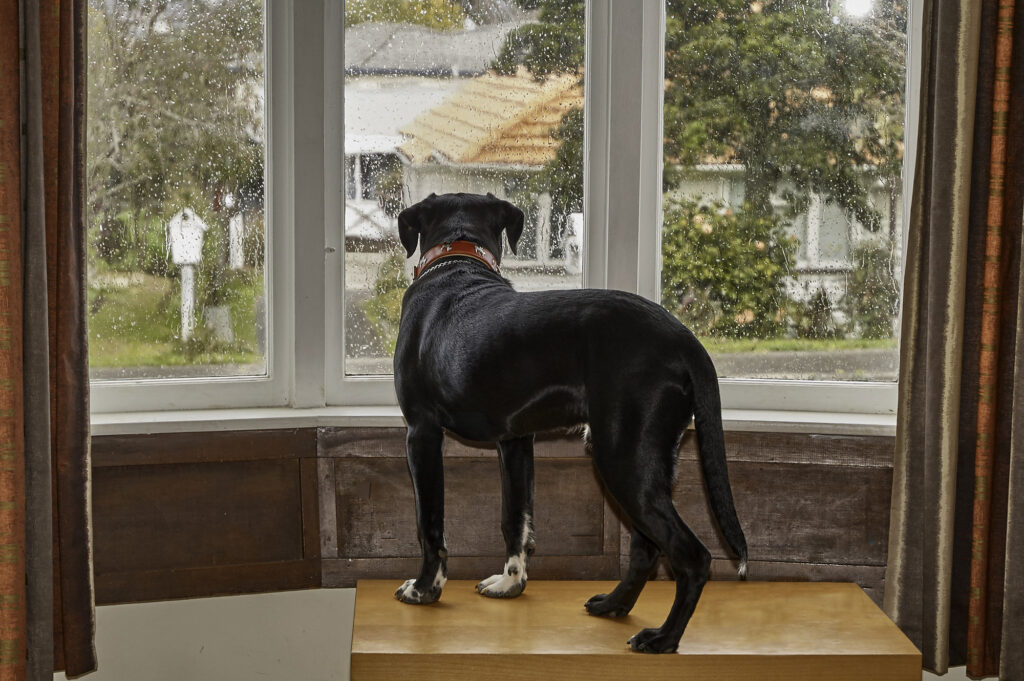How to Handle Dog Separation Anxiety

Dogs go through separation anxiety when their owners leave the house. Don’t let your dog tell you when to do anything. You tell him when he can be petted, up on the bed, go out the door, play with the toy, etc. This puts you as the leader and he will respect that. If you are a fair and consistent leader he will have no problem adjusting to when you leave or for how long you’re gone. Below I discuss ways to help limit separation anxiety for your dog.
Systematic desensitization
Start by going into another room with a baby gate up. He can see you but can’t get to you. If he barks or whines keep your back to him. When he is quiet you turn towards him but keep your eye contact away from him. Walk towards the gate, then into the room he is in, still ignoring him. Practice this a few times then up the criteria by going out of sight for a second or two. Next, use the door instead of the baby gate. Go into that room, close the door and wait 2 seconds then open the door and go back into the room that the dog is in. Remember to avoid eye contact for a few seconds after you rejoin him. The next time, up the time frame to 5 seconds that you are out of sight, either with the door closed or the baby gate up. Then the next time make it only 2 seconds then 8 seconds, then 3 seconds, then 10 seconds, then 5, then 6 seconds, then 7 seconds, then 4 seconds, then 10 seconds, etc. Add that all up and you’ve worked for one or two minutes including the time you are back with the dog ignoring him.
Practice this in every room in the house
Vary the length of time you are gone. Then do this with the back door (or the door that you don’t normally leave for the day from). Also do this with any gates you have in your yard.
Practice your whole “leaving for the day” routine
Get up, let the dog out, do your morning “get ready for work” stuff. Take a few minutes to play with him. Try to get him tired. Then continue with your routine all the way to go out the front door. Come back to the house after 1 minute and ignore the dog. Sit down for a few minutes. Then get up, grab your keys, purse, coat, etc., and go back out the front door. Come back in after 2 minutes. Repeat this until you can get up to 10 minutes with you outside. Remember to vary the time frame and not make it continually longer and longer. Put some very short times in between the longer ones.
Walk around in the house holding a dog toy
Show him you’ve got it and be very excited that you do have it. Just before you leave, ask the dog to do something (sit, down, etc.) then give him the toy. This transfers his excitement from you to the toy.
Always ignore the dog
When you first come home for about 5 minutes. Then talk to him in a low-key manner.
Don’t feel guilty for leaving the dog
He will be fine. Don’t act any differently with him just before you leave than if you just stay at home. If you get all excited, change your tone of voice, or anything different he will change too. He will be worried when you leave and he will be anticipating your homecoming with hyperactivity.
Make sure you give your dog plenty of exercises and mental stimulation.
Play training can help a lot in making the dog less dependent on you. If you have more steps and techniques on how to handle dog separation anxiety please contact me. You can learn more about dog separation anxiety
